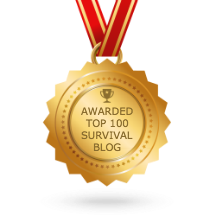Eventually a survivalist will end up with an abundance of empty number 10 cans and wonder what useful purpose he could put these items to. I can ask yourself what you can do when you have those empty cans available. Each time I go to place one in a recycle bin I keep thinking that there must be some useful thing that I could be accomplishing with it. These cans are great assets for other uses than just their original purpose. This article will hopefully cover several different unique and creative ways to reuse them. Some of the more common uses that I have come up with are listed below.
If you are a pet own they make a great way to store or to scoops out the pet food. As a scoop it will work great for horse and chicken foods. As indicated the number ten cans usually work best if used as a scoop for the larger animals.
It goes without saying that the empty cans have a variety of uses involving arts and craft projects. With a bit of glue and colored paper a child can be kept busy and happy for several hours during a rainy day in the house. They also can be crafted into a great drum for a toddler's toy. You can store your child's crayons in them or even small toys. If you are into making home made candles you would find them a great help for storing melted paraffin.
Out in the garage you can clean paint brushes with them or even use the cans to transfer paint to allow several people so they can use the paint from the same paint can. They are good for storage of used motor oil when you change your cars lubricant.
Creative wives can often take an empty number ten can and make some fabulous accessories for their kitchen. They can skillfully decorate them to just about compliment any theme they might have in their kitchen. They can be spray painted with stickers attached for creating a personalized canister set. She can store cookies readily in them as well.
From a survivalist's point of view you can make yourself a tin can stove. These are useful in the event of a power failure or for storing in your bug out vehicle. They can be reused to store miscellaneous foods that are encased in Mylar pouches. They are perfect for storing small emergency bug out kits in your car. Don't forget their usefulness as targets when practicing your archery, gunnery or other marksmanship skills. If you have a boat many of the older fisherman claim the number ten cans are the best form to use when making a home made boat anchor.
You can't leave out the home office either as these cans can be very useful as a desk organizer. It can hold your extra pencils, pens, rulers or scissors with ease. These too can be lavishly decorated in any way you desire.
Most empty cans can make very effective flower pots for either indoor or outdoor planting. A little spray paint and a few decorating accessories added and you have a personalized work of art.
Your empty cans can add some interesting usefulness as caddies for the bathroom. They can hold your combs, hairbrushes and other hair accessories such as ponytail holders, hair bands or barrettes with ease - keeping them up and safely out of the way. Decorating your can is easy as explained above.
An interesting idea that is popular with youngsters is to create a time capsule using the empty cans. You can bury a new one every year or two adding such items as a local newspaper, the current postage stamp and other items that would prompt conversation in the future when opened.
If your son or daughter is in the scouts you could donate them for use as stilts or for transforming to buddy burners for upcoming camping trips.
As you can clearly see with a slight bit of imagination you can come up with a lot of different ways that you can reuse an empty number ten can. I have merely touched the surface of uses for these items. Use your imagination and some serious thought and I am certain you too can find some great uses for these empty cans.
Copyright @2010 Joseph Parish
Survival Training
Simple: Just Add Water - Outdoor Gourmet Meals - WiseFoodStorage.com





